研究速递|配体-金属电荷转移诱导Fe(III)还原与过硫酸盐活化的有机物强化去除 - 基本概况 - 金 鹏康
近日,污水处理与资源化创新团队在过硫酸盐高级氧化技术方面取得新进展,相关成果以Efficient Fe(III) reduction and persulfate activation induced by ligand-to-metal charge transfer under visible light enhances degradation of organics为题发表于国际著名期刊Chemical Engineering Journal(IF=13.273)。金鹏康教授为论文通讯作者,博士后许路为论文第一作者,研究得到了国家自然科学基金、陕西省重点研发计划的资助。

第一作者:许路 助理教授
通讯作者:金鹏康 教授
论文链接:https://doi.org/10.1016/j.cej.2022.137052
图文摘要
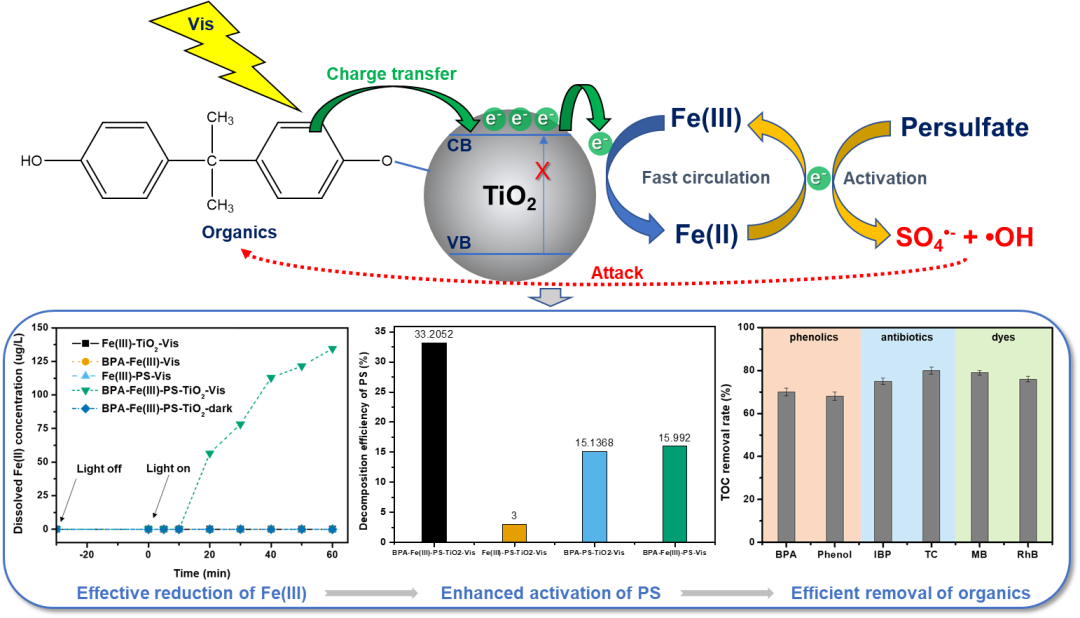
成果简介
由过渡金属离子Fe(II)和过硫酸盐(PMS/PS)构成的类芬顿体系,具有易实施、成本低和绿色无毒等特点,因而具有非常广阔的实际应用前景。然而,由于Fe(III)的快速积累,Fe(II)-PS类芬顿体系面临反应钝化和持续氧化性能差等问题。对此,基于配体-金属电荷转移原理(ligand-to-metal charge transfer,LMCT),本研究构建了一种由可见光驱动的新型多相类芬顿催化反应体系(有机物-Fe(III)-PS-TiO2-Vis),利用清洁低能耗的可见光驱动有机物-TiO2-Fe(III)间的电荷传递,在不使用外源还原剂和对TiO2进行任何改性修饰的条件下,实现了Fe(III)的有效还原和PS的高效催化分解(PS利用效率提升至33.2%),显著提升了硫酸根自由基(SO4-•)和羟基自由基(•OH)的产率,从而实现了包括酚类、抗生素和染料类有机物的高效降解与深度矿化。与传统Fe(II)-PS以及Fe(II)-H2O2体系相比,有机物-Fe(III)-PS-TiO2-Vis体系可在更低的铁盐投加量和更高的pH条件下稳定运行。深入的机理分析发现,通过Fe(III)还原、PS活化、活性氧化性物质生成和有机物分解等过程产生的协同催化效应,使得该新型多相类芬顿催化反应体系具有可持续且优异的可见光催化反应性能。此外,对于实际的钴镍湿法冶炼废水的处理测试结果显示本研究所提出的有机物-Fe(III)-PS-TiO2-Vis催化体系在污废水深度处理中具有突出的应用潜力。
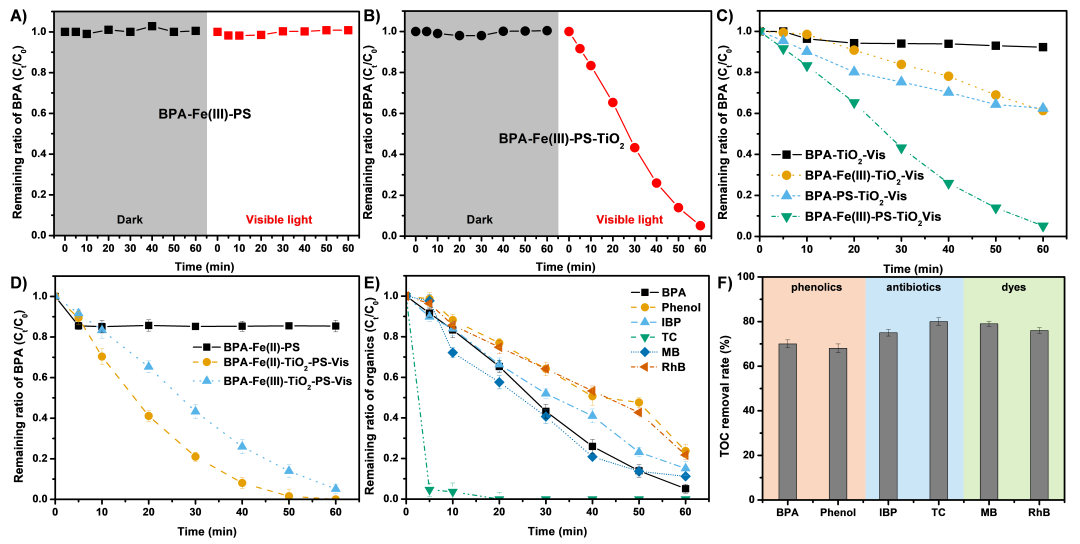
Fig. 1. A)-D) BPA degradation efficiency achieved by different catalytic systems. E) Degradation rates and F) mineralization rates of various pollutants in the organic-Fe(III)-PS-TiO2-Vis system.
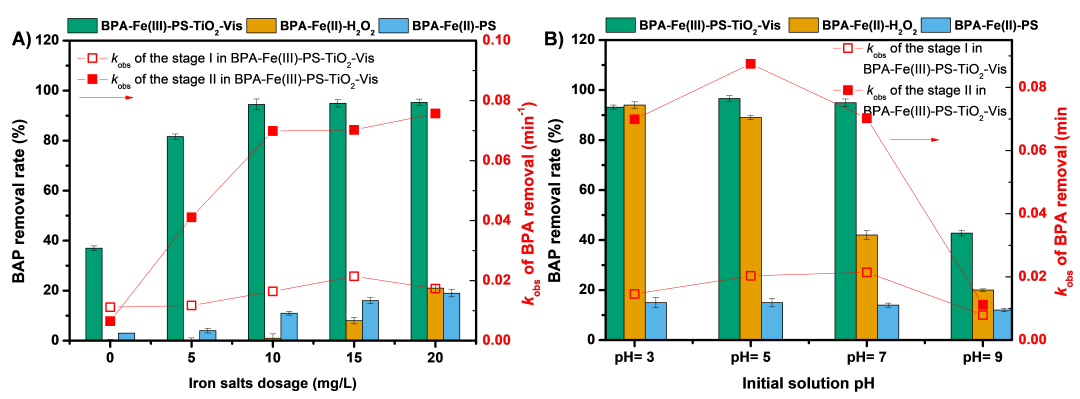
Fig. 2. Comparison of BPA-Fe(III)-PS-TiO2-Vis with BPA-Fe(II)-PS and BPA-Fe(II)-H2O2 systems under A) different iron salt dosages and B) different initial solution pH conditions.
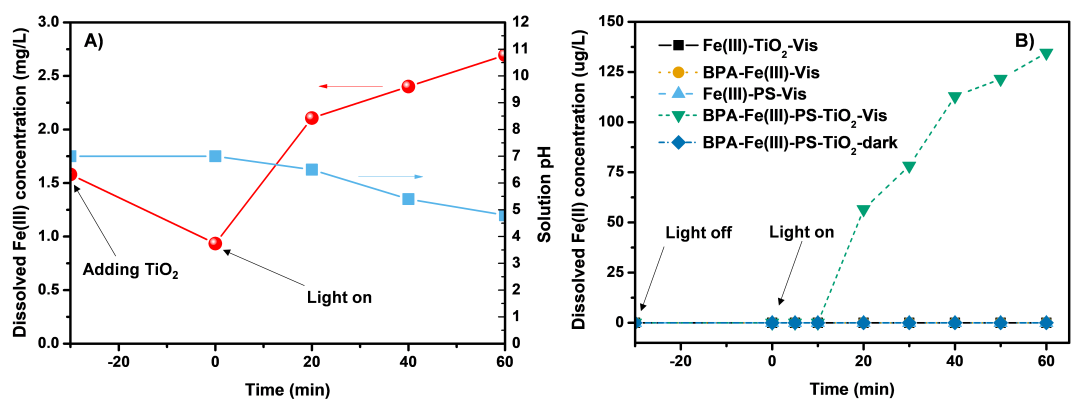
Fig. 3. A) The changes of dissolved Fe(III) concentration and solution pH in BPA-Fe(III)-PS-TiO2-Vis system during the catalytic reaction. B) Generation of dissolved Fe(II) in different reaction systems.
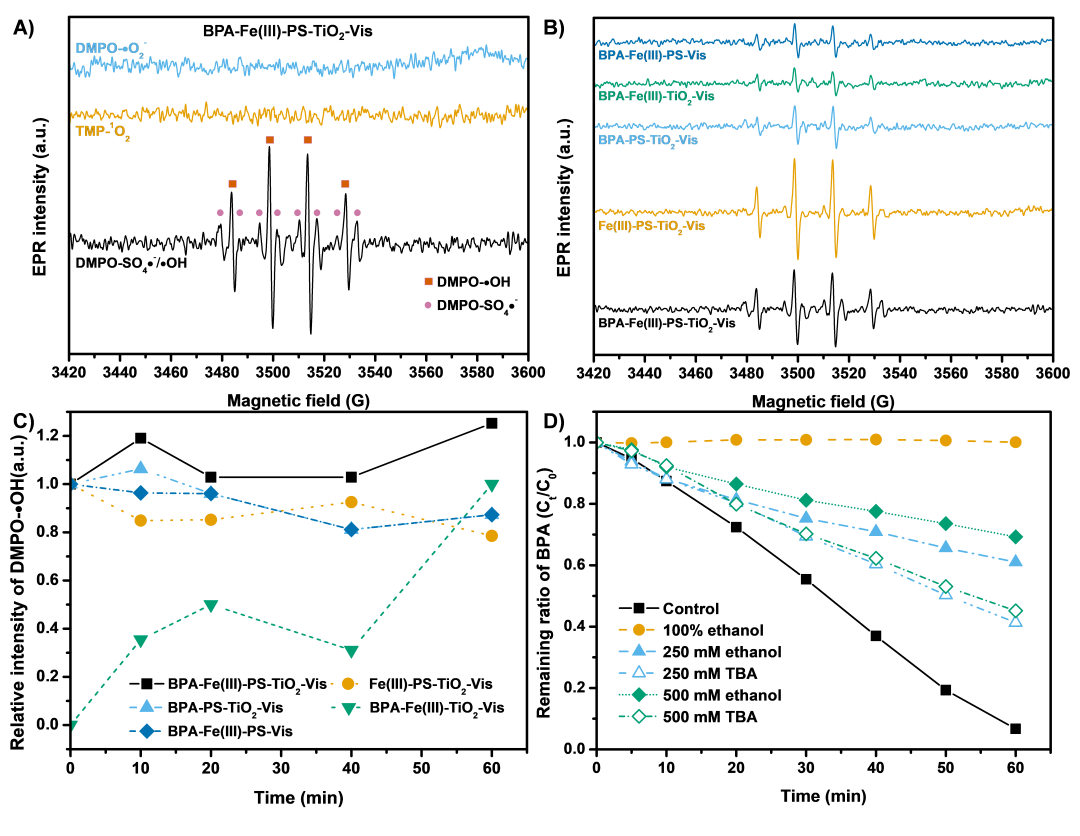
Fig. 4. A) EPR spectra of DMPO-•OH, DMPO-SO4•-, TMP-1O2, and DMPO-•O2- obtained from BPA-Fe(III)-PS-TiO2-Vis system. B) Comparison of EPR spectra of DMPO-•OH obtained from different reaction systems. C) The variation in the relative intensity of DMPO-•OH during the degradation of BPA by different reaction systems. D) Effects of ethanol and TBA on BPA degradation in the BPA-Fe(III)-PS-TiO2-Vis system.
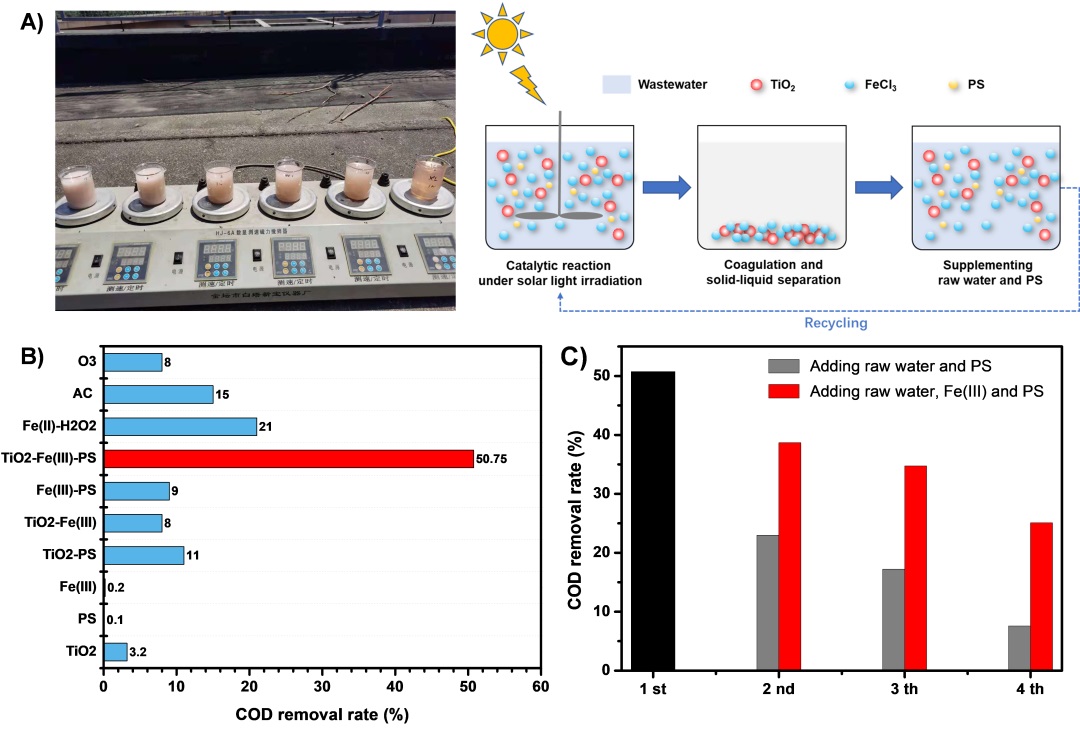
Fig. 5. A) Experimental setup and operating mode. B) COD removal rate in different catalytic reaction systems, and C) cycling tests of the proposed LMCT-mediated heterogeneous Fenton-like process for the treatment of actual wastewater obtained from nickel and cobalt smelting processes.
-
2023
09-24
-
2023
05-24
-
2023
04-29
-
2023
04-22
-
2023
03-11
-
2023
02-20

 (创新港)
(创新港)


